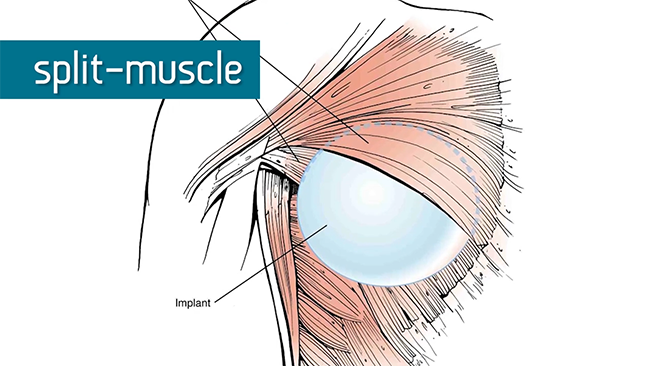Today’s woman is more athletic than ever. Women’s competitive bodybuilding and fitness modeling competitions have grown in popularity in recent years. Every town has several CrossFit gyms and CrossFit has developed into its own competitive sport, with many women competing. Mixed martial arts and boxing, primarily male dominated in the past, have seen an explosion of female fighters into the mainstream.
by The Plastic Surgery Channel
and Richard Baxter, MD
The women who participate in all of these sports, and many more traditional sports, are extremely fit with very disciplined diets. “They tend to have good muscle development, they have low body fat, and that often goes with small breasts. They want to look feminine, and that’s a healthy motivation,” says Dr. Richard Baxter, a board certified plastic surgeon and nationally recognized expert in breast surgery.
Unique Lifestyle = Unique Surgical Challenges

As a combined result of the strength of her chest muscles and the lack of fat covering the muscle, when she flexes it can distort the implant below. The muscles pull the implants away from each other and upward while flexed, which can be very visible in a bikini, bra or sports bra. “If you want to leave the muscles alone, then put the implant above the muscle. But, that compromises the coverage that you get, the natural look. It’s just not going to look as good, oftentimes,” says Dr. Baxter. When an implant is placed above the muscle on a woman with little fat to cover it, the edges of the implant are often very obvious, screaming, “I’m fake!” even if the size of implant is appropriate and not too large.

Finding Middle Ground
“There are ways we can make compromises between the two techniques,” explains Dr. Baxter. “Subfascial placement is a technique above the muscle with a thin extra layer of support that can help. Split muscle technique actually preserves muscle function, which is appealing to women like that, but minimizes those animation deformities.” By choosing a surgeon who will take the time to find the best approach for your particular body type, you minimize the risk of needing to return to the operating room to fix a problem that could have been avoided. “There’s a temptation for surgeons to have a cookie cutter approach to this: this is what works for me, this is how we do it. But there are women who are in special categories that really need to look for someone who has a special interest in their particular situation: the athletic woman.”